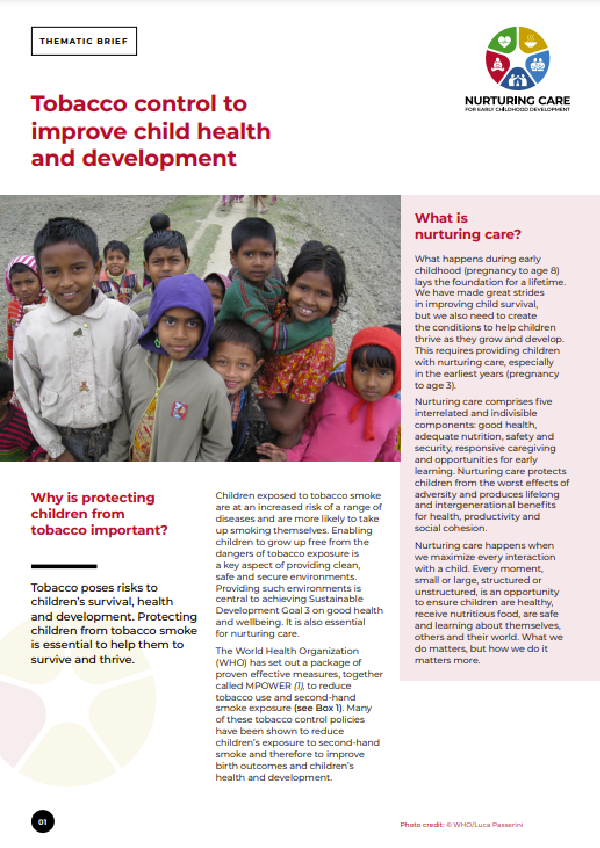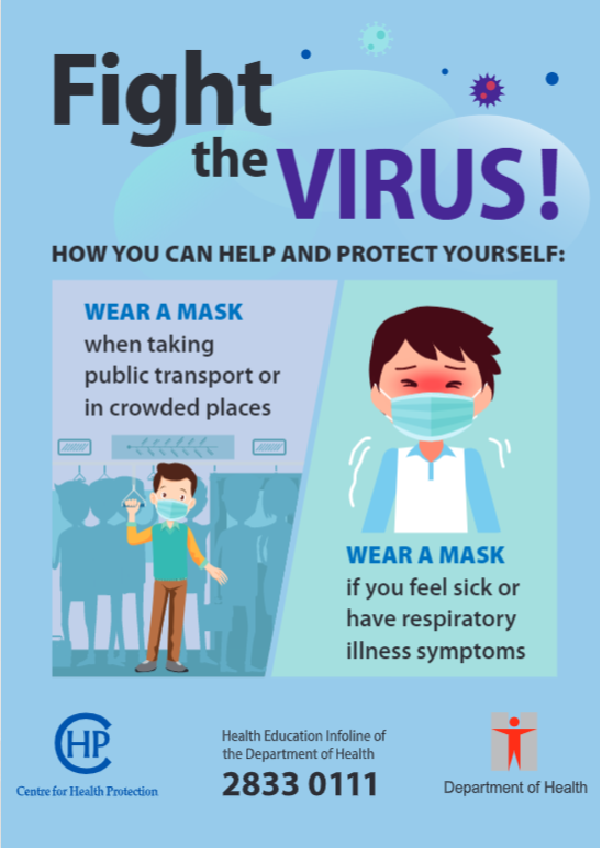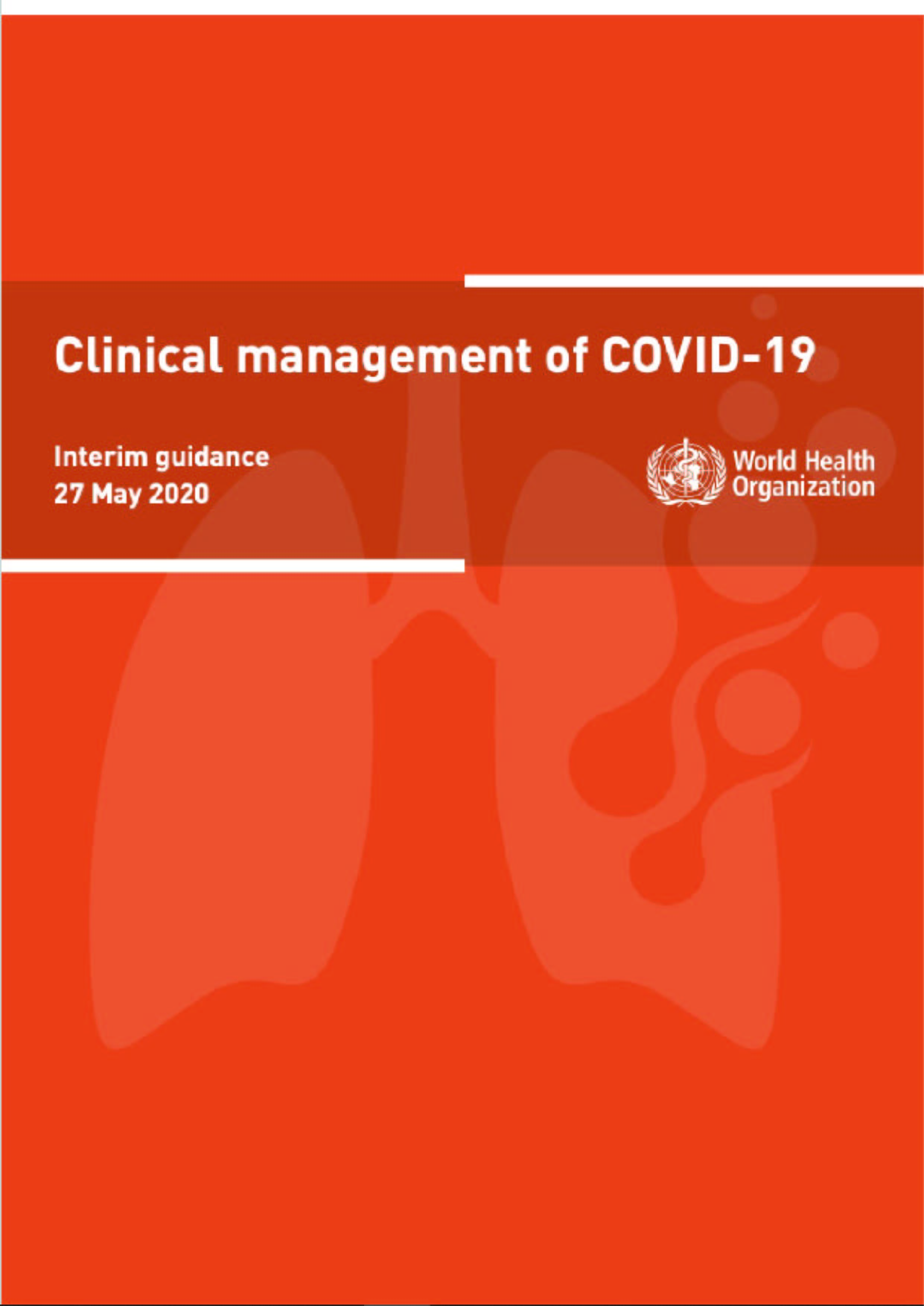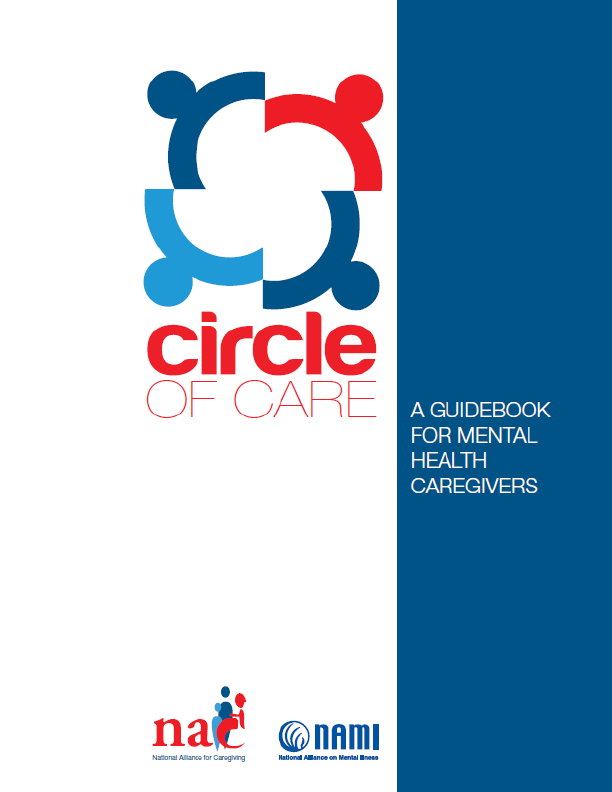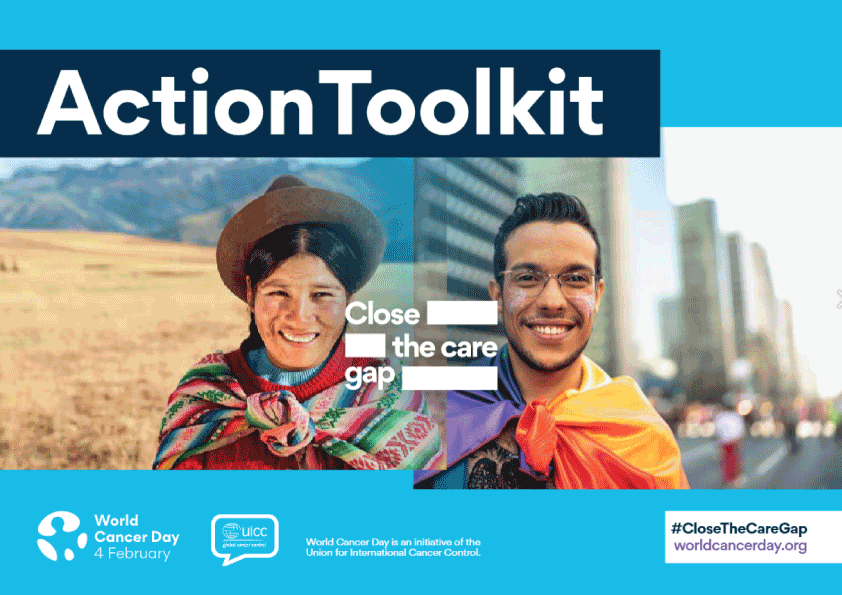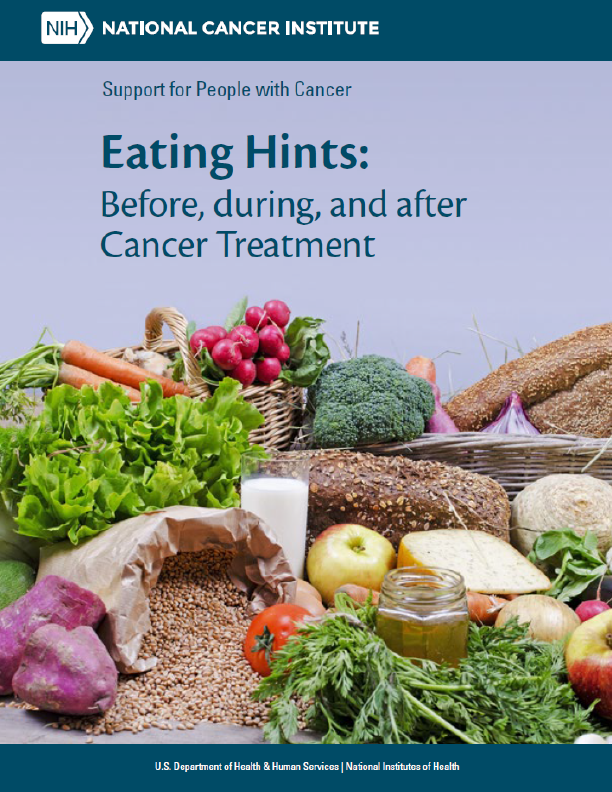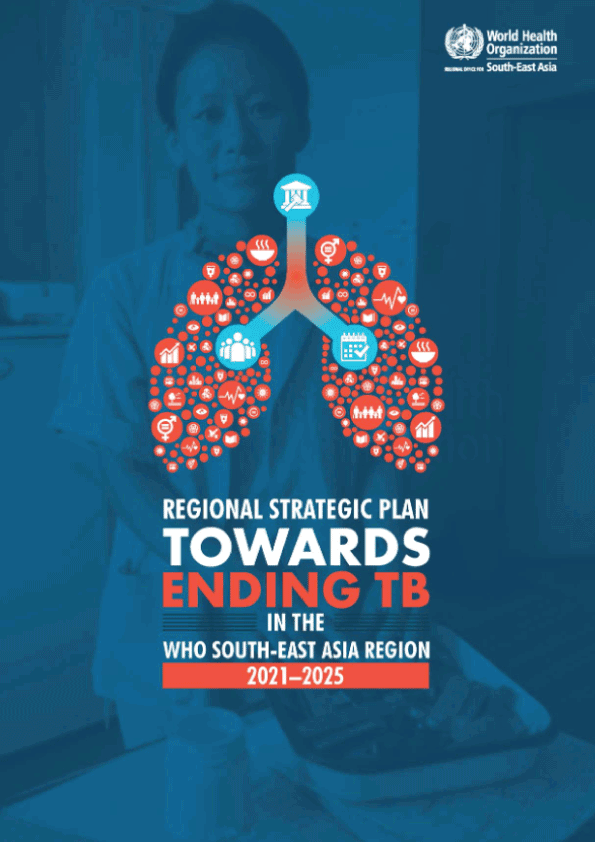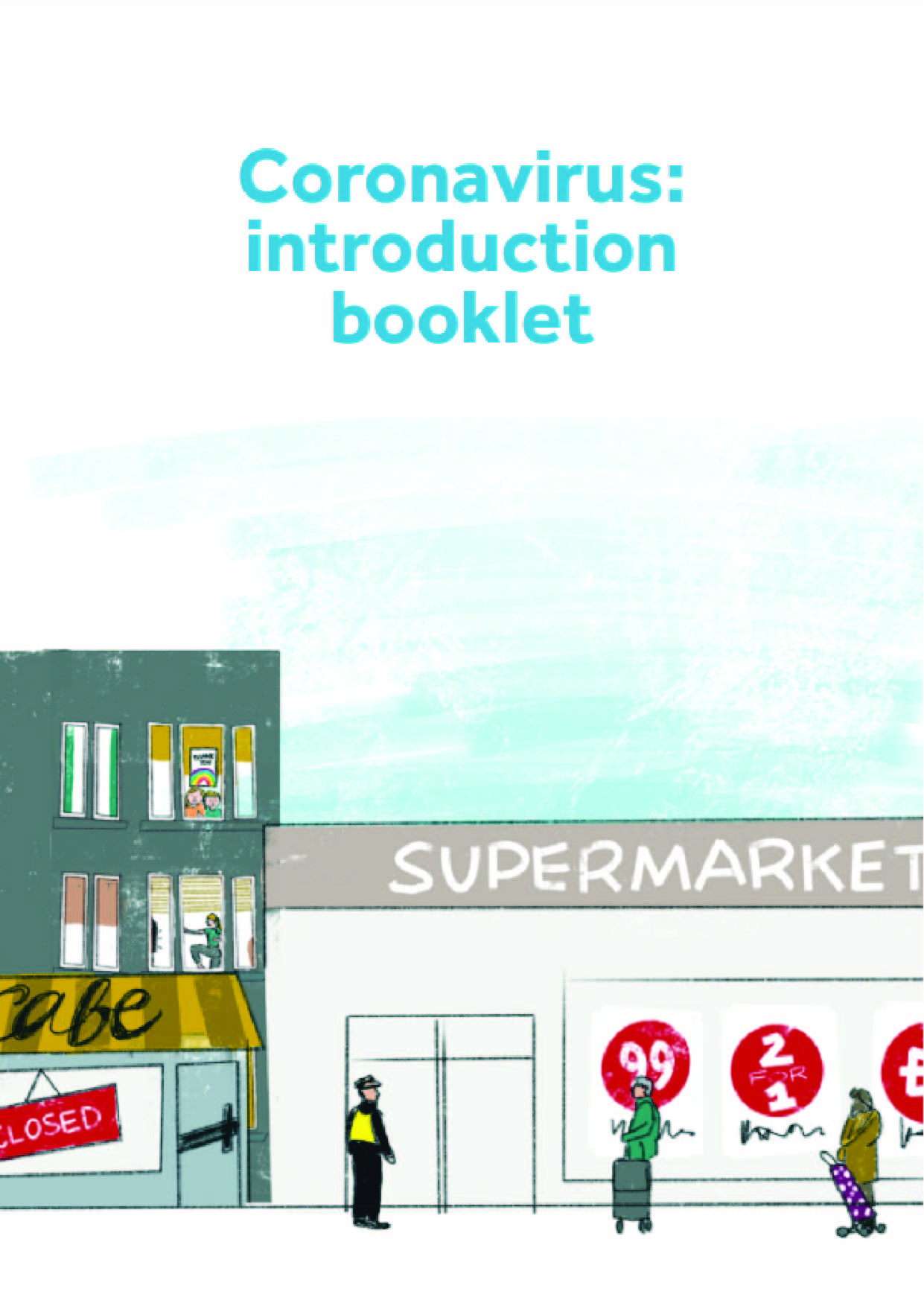Children exposed to tobacco smoke are at an increased risk of a range of diseases and are more likely to take up smoking themselves. Enabling children to grow up free from the dangers of tobacco exposure is a key aspect of providing clean, safe, and secure environments. Providing such environments is central to achieving Sustainable Development Goal 3 on good health and wellbeing. It is also essential for nurturing care.
The World Health Organization (WHO) has set out a package of proven effective measures, together called MPOWER, to reduce tobacco use and second-hand smoke exposure. Many of these tobacco control policies have been shown to reduce children’s exposure to second-hand smoke and therefore improve birth outcomes and children’s health and development.
This brief summarizes the health risks that tobacco poses to children, particularly to infants and young children, and the strong protective effect of tobacco control measures. The aim is to raise awareness among practitioners and policymakers about the importance of strong tobacco control measures for protecting the health and development of children. The brief gives examples of actions needed to advance tobacco control in countries and local settings and to align child health and tobacco control goals.
Second-hand smoke, which is formed from the burning of cigarettes and other tobacco products and exhaled by the smoker, kills around 1.2 million people every year; 65 000 of these premature and preventable deaths are in children under 15 years.
Tobacco use is also a key driver of early-life inequality. A study in Scotland found that smoking during pregnancy is responsible for about one-third of the additional stillbirths and infant deaths among the most deprived households. Maternal exposure to second-hand smoke during pregnancy also increases the risk of a baby being stillborn.
There are a number of ways tobacco use impacts child health and development. Tobacco smoke includes carcinogenic and other harmful substances, such as formaldehyde, benzene, and lead. These substances have been linked to multiple conditions and are especially harmful to unborn and young children. Young children are particularly vulnerable as they have higher breath rates, and their lungs and bodies are still undergoing development. Although exposure to tobacco in early life is predominantly due to second-hand smoke, some children also actively use tobacco from a young age, with grave consequences for their health and development. Unlike adults, children are unable to regulate their own level of exposure to tobacco smoke, particularly before birth and in early life. In addition, families with smokers are much more likely to experience house fires and related injuries. Children deserve and require clean, safe, and secure environments, and clearly, these need to be completely smoke-free, even from before birth. Tobacco-related threats to nurturing care are often overlooked. Adult tobacco consumption has a significant cost to families, contributing to hunger and food insecurity for both children and adults in highly industrialized as well as lower-income countries. It also contributes to the grief and life-long consequences of losing a parent to smoking. Even without the death of a parent, many households are impoverished by the cost of smoking diverting spending away from basic household expenses, as well as increasing risks of catastrophic health expenditure.
